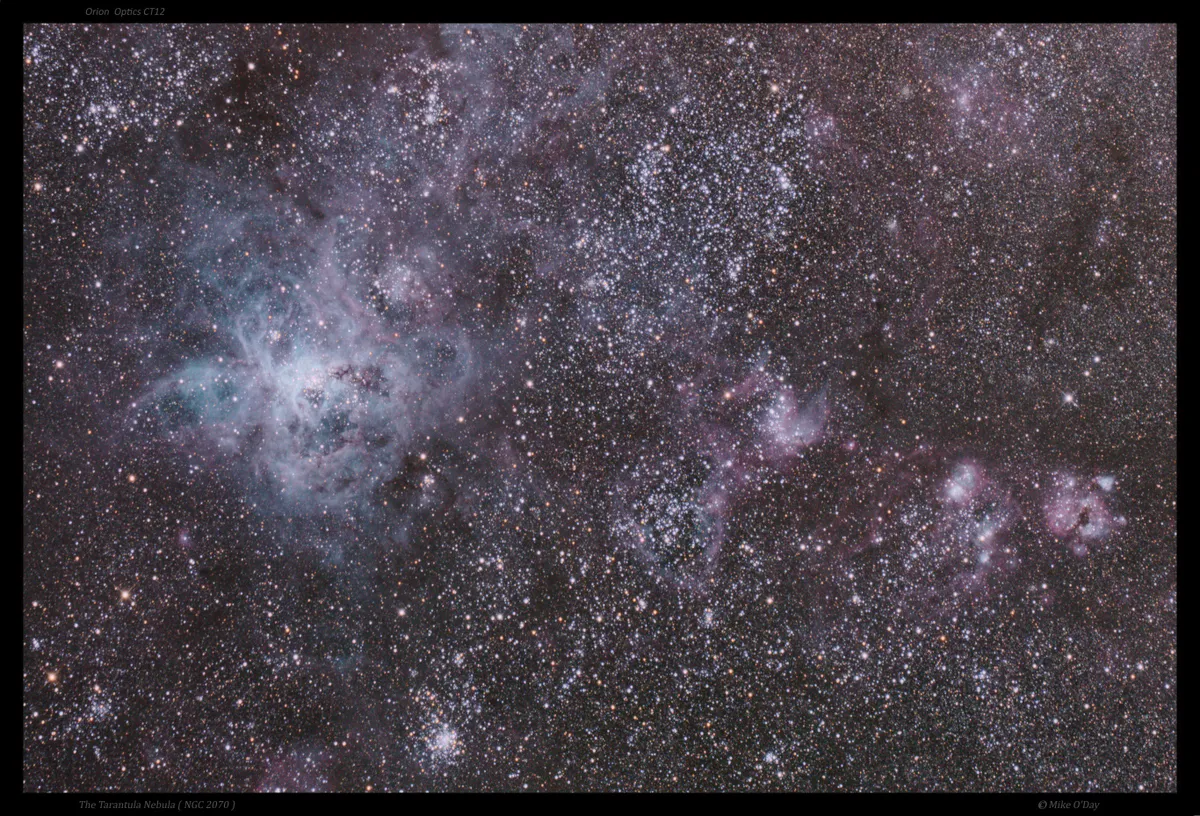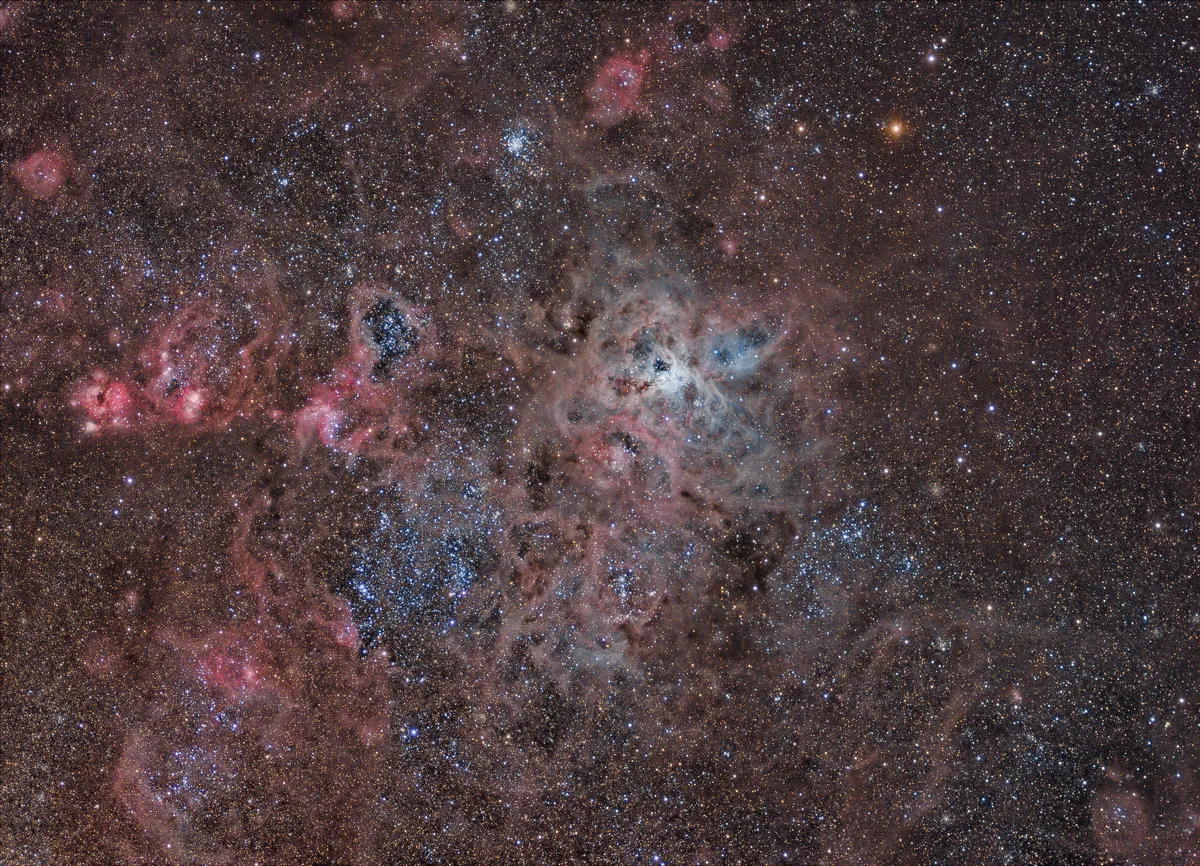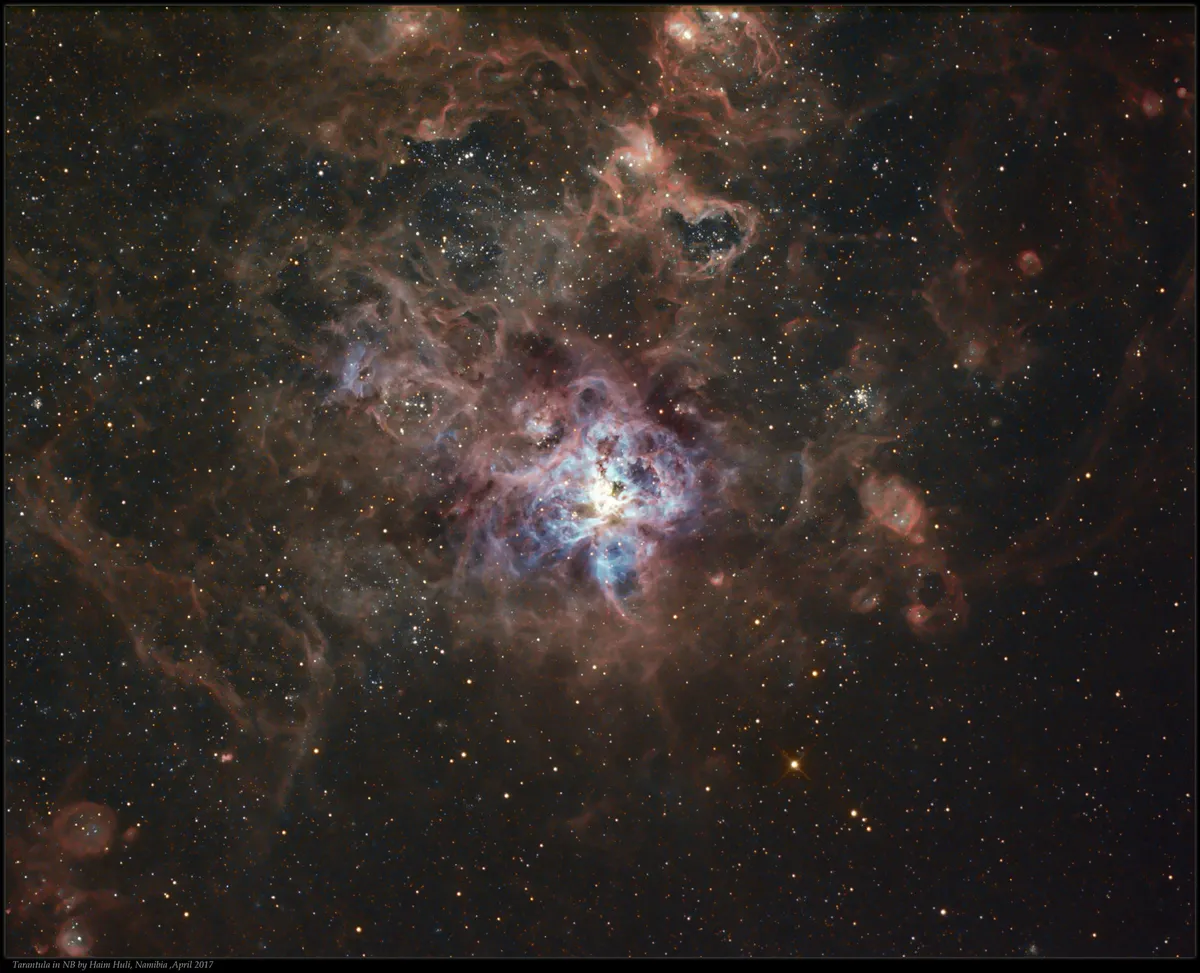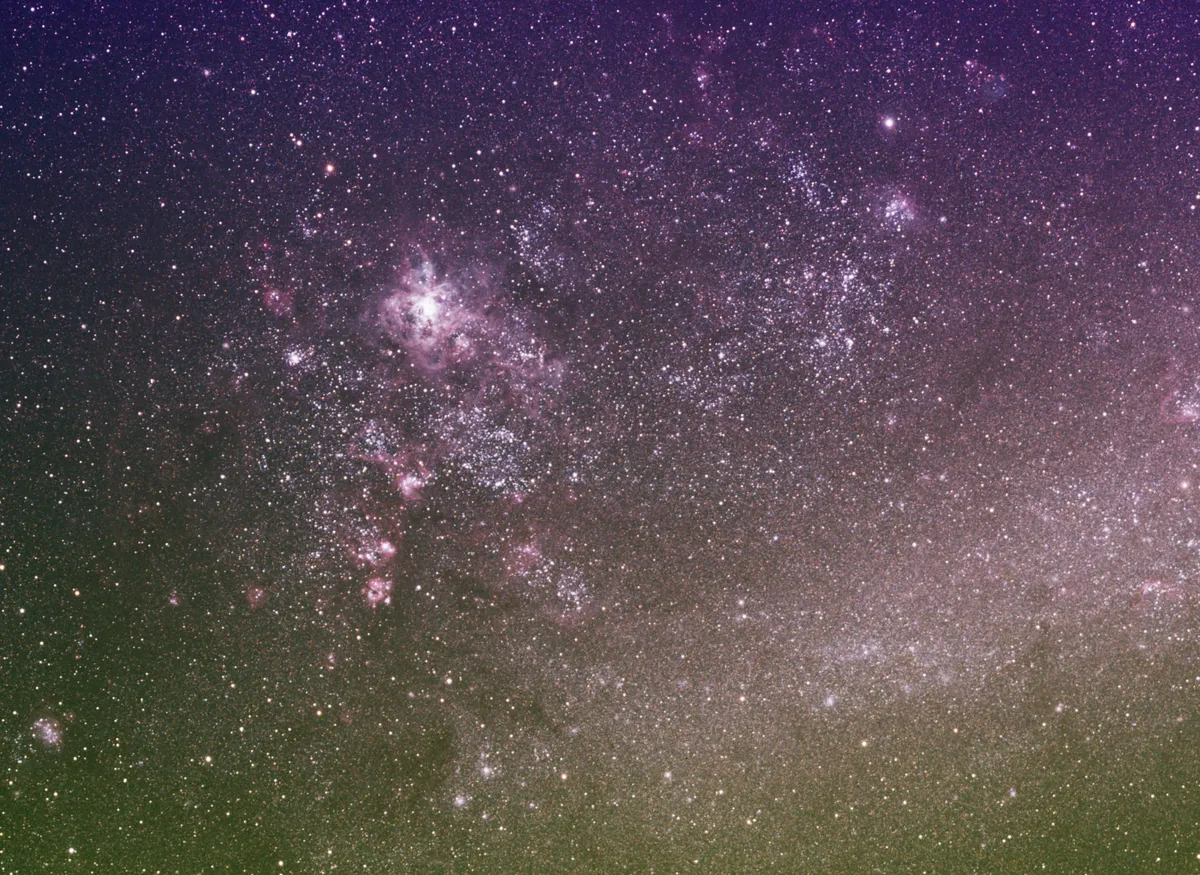The Tarantula Nebula, NGC 2070, is one of the closest galaxies to the Milky Way and is located in the Large Magellanic Cloud, a satellite galaxy of our own.
The nebula is 1,000 lightyears across and is produced by cosmic gas and dust being lit up by radiation from high concentrations of massive stars known as super star clusters.
A lack of intervening dust between the nebula and Earth makes it a good region for astronomers who want to study it to learn more about star formation.
This, combined with the nebula's proximity, also make it a great target for astrophotographers, who can easily resolve individual stars and capture the dark wisps of dust and filaments of glowing gas that led early astronomers to dub NGC 2070 the Tarantula Nebula.

The young star cluster NGC 2070, which is associated with the nebula and gives it its formal designation, can be seen as the brightest region in images of the Tarantula Nebula.
It is thought to host about 500,000 stars and its centre contains stars that measure 100 times the mass of the Sun.
These stars are blasting out cavities in the surrounding cosmic material with ultraviolet light, creating the multi-textured deep-sky target beloved of many astrophotographers.
Those of us old enough to remember may also be aware that on the outskirts of the Tarantula Nebula lies SN 1987a, which was a supernova spotted in 1987 that glowed with the power of 100 million Suns over a period of months.

Below is a selection of images of the Tarantula Nebula captured by astrophotographers and BBC Sky at Night Magazine readers from around the world.
For advice on photographing nebulae, read our guide to deep-sky astrophotography or our top tips for deep-sky image processing.
And don't forget to send us your images or share them with us via Facebook, Twitter and Instagram.










